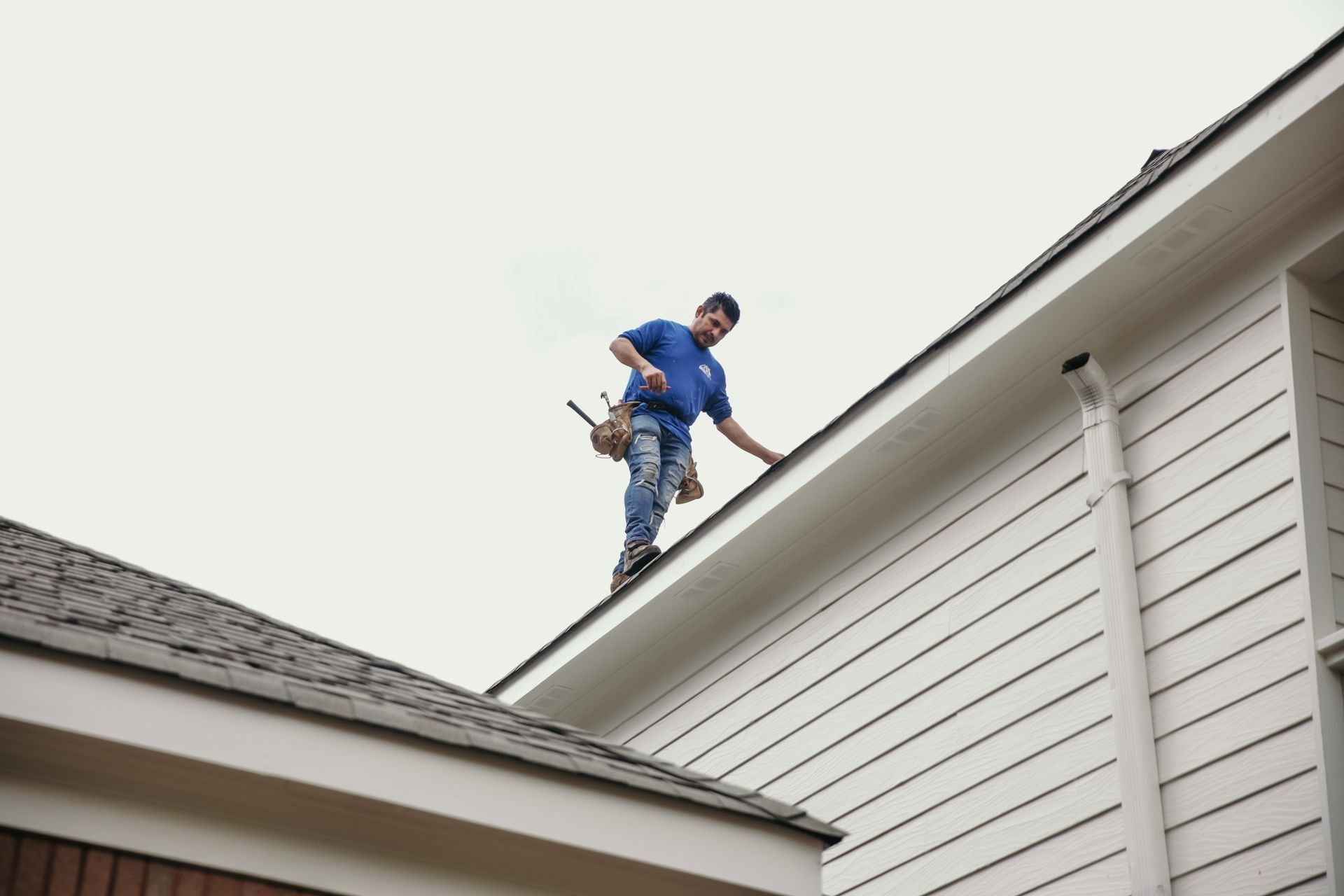Why Is It Illegal to Collect Rainwater? The Real Rules of Rainwater Collection in the U.S.
You’ve probably heard the claim and asked yourself: why is it illegal to collect rainwater? Short answer: In most places, it isn’t. Rainwater harvesting is legal, regulated, and often encouraged as a way to stretch a limited water supply. This guide clears up the myths, explains why some states regulate how you collect rainwater, and shows how to set up rainwater collection safely and legally.
Key Takeaways
- The short answer to why it is illegal to collect rainwater is: in most places, it isn’t; rainwater harvesting is legal and handled on the state level.
- Most rules focus on rooftops only, storage caps, and on‑site use; many states even offer rebates for rainwater and encourage rainwater harvesting.
- A basic rainwater harvesting system or rain barrel reduces demand on the municipal water supply and provides a local water source for outdoor use.
- Western states follow water rights doctrines, so some states restrict rainwater harvesting with limits, such as two rain barrels with a combined capacity.
- Rainwater collection is legal as long as collection points are roofs and you use the water outdoors on the same property, unless permits allow more.
- Texas is a model: rainwater in Texas is encouraged by the state, with tax breaks and the Rainwater Capture Act of 2012 supporting residents to collect rainwater.
- Before you install rainwater equipment, check state and local laws, storage limits, and any regulations on rainwater harvesting for potable uses.
Rainwater harvesting is the capture, storage, and use of precipitation that falls on your roof or other defined surfaces. A typical rainwater harvesting system uses gutters, a downspout diverter, a first-flush filter, and a barrel or cistern to store water for later use in the garden or for other non-potable needs.
Why harvest rainwater?
Collecting rain has two wins: it reduces storm runoff pressure on streets and creeks, and it provides a clean water source for outdoor irrigation. In drought cycles, rainwater collection helps households stretch their water supply and cut municipal demand.
Terms you’ll see throughout
- rainwater collection and harvesting of rainwater both refer to capturing and storing roof runoff.
- rain barrel is a small tank (often 50–110 gallons) hooked to a downspout for garden use.
- rainwater harvesting system and rainwater collection system describe the whole setup, from gutters to storage.
Why is there a myth that it’s illegal to collect rainwater?
The phrase why is it illegal to collect rainwater pops up because water in the American West is governed by prior appropriation. Under that system, a water right gives a senior user priority access to a shared water source during shortages. Some people fear that widespread rooftop collection would reduce stream flows due to those senior rights.
So, is it illegal to collect rainwater?
In the vast majority of states, no. Rainwater harvesting is legal, and many states encourage rainwater harvesting through education, tax exemptions, or rebates. A handful of states restrict rainwater harvesting with storage limits or roof-only rules to protect downstream water users during dry years. Put simply, rainwater collection is legal, but you must follow local and state rules.
Water rights 101: why rules exist
Western states follow prior appropriation, while many eastern states rely on riparian rights. The doctrine states that water is a shared public resource and that a permitted water right controls its use once rain reaches natural channels. Because rain falling on a roof hasn’t joined a stream yet, many states allow rainwater collection for on-site, non-potable use. Some states restrict rainwater harvesting by limiting volume or specifying that you only collect from rooftops, not from yards or creek beds.
Common regulatory themes
- allowed to collect rainwater from roofs only (no ground catchment)
- storage caps for small systems (for example, two rain barrels with a combined capacity limit)
- use the water outdoors on the same property where rainwater was collected
- potable use requires permits, treatment, or both
State-by-state snapshot (selected examples)
The table below summarizes how several states approach rainwater collection. Always check city and county rules before you install rainwater systems.
| State | Legal status in plain language | Typical limitations | Notes |
|---|---|---|---|
| California | Rainwater harvesting is legal | Rooftop capture for non-potable uses; local plumbing rules apply for indoor systems | The Rainwater Capture Act of 2012 clarified rights for homeowners, businesses, and public sites. |
| Colorado | Rainwater collection is legal with limits | Two rain barrels, combined storage up to 110 gallons; roof-only; outdoor use on the same property | Designed to protect downstream water right holders during drought |
| Texas | Rainwater harvesting is allowed and encouraged by the state | Outdoor systems are widely permitted; potable systems need treatment and may require permits | State tax exemptions, HOA protections, and guidance for rainwater in Texas support adoption |
| Oregon | Rainwater collection is legal | Roof-only catchment; outdoor use preferred without treatment | Rooftop rainwater is generally fine; ground catchments trigger water rights issues |
| Arizona | Rainwater harvesting is allowed; some cities incentivize it | Local rebates and design guides; potable use needs permits | Tucson and others offer rebates |
Rain barrel basics: small systems, big impact
A rain barrel is the simplest way to collect rainwater. Two rain barrels can capture a surprising amount of water during a storm, giving you a free source for drip irrigation or hand-watering beds.
How much rainwater can a barrel store?
A typical 55-gallon barrel fills quickly in a downpour. The amount of rainwater you can store depends on the roof area and rainfall intensity. Even in dry regions, a few storms can fill multiple barrels.
Safety and placement tips
Set barrels on a stable base, screen all inlets to keep mosquitoes out, and use an overflow to direct excess water away from the foundation. Keep the outlet above grade and use a hose bib or drip line to meter use.
Moving beyond barrels: cisterns and whole-home setups
Larger cisterns and modular tanks turn your system from occasional watering into a dependable water source. A well-designed rainwater harvesting system adds first-flush diversion, sediment filtration, and sometimes UV or carbon treatment before indoor non-potable use (toilet flushing, laundry) where allowed.
Harvest rainwater responsibly
If you plan to use rainwater indoors, check plumbing rules and health codes. Many states restrict rainwater harvesting for potable uses unless the water goes through approved treatment. For outdoor irrigation, a simple screen and first-flush device are usually enough.
Regulations on rainwater: what to check before you build
Rules sit at the state and local level. City plumbing codes, stormwater departments, and county health offices publish guidance regarding rainwater harvesting. Before you build a rain barrel or install rainwater, talk with your local department about setbacks, mosquito control, and overflow routing.
Questions to answer up front
- Are you installing rooftop rainwater harvesting only, or any ground catchment?
- How much rainwater will you store, and where will overflows go?
Paperwork and permits
Small outdoor systems rarely need permits. Indoor tie-ins, potable use, and large cisterns often trigger plan review. Some states even offer tax credits or rebates to encourage rainwater collection.
Why do some states restrict rainwater harvesting?
Restrictions on rainwater harvesting exist mainly to protect senior water users and stream ecology during dry periods. In places where every drop matters, the state and local laws regulate rainwater harvesting volume and use to keep the water balance fair.
Typical restrictions on rainwater harvesting
- roof-only collection (no yard basins that intercept natural flow)
- storage caps for small residents (barrel limits or permit thresholds)
- on-site use only (no exporting to other properties)
- non-potable use unless treated and permitted
Benefits of rainwater you’ll notice right away
Rainwater is soft and plant-friendly, with fewer minerals than municipal supplies. Using rainwater for watering reduces demand on your community water supply, cuts your bill, and keeps stormwater from overwhelming local drains during big storms. In wildfire and drought-prone regions, capturing roof runoff helps homeowners prepare for prolonged droughts.
Community benefits
Neighborhood programs that encourage rainwater harvesting reduce localized flooding and erosion. Cities that encourage rainwater harvesting often pair rebates with native landscaping support.
Regional focus: rainwater in Texas and the western states
Rainwater in Texas has become a mainstream tool for water conservation. State-level statutes protect installations from HOA bans and offer sales tax exemptions on equipment. Across the West, states regulate rainwater harvesting to balance household storage with river flows promised to senior rights. Western states sometimes limit how much rainwater residents can store and how it’s used outdoors.
Western myths vs. reality
It is not broadly illegal to collect rainwater in Western states. States regulate rainwater harvesting to honor water rights priorities. Many states allow rainwater collection as long as collection points are on rooftops and the water is used on-site.
How to stay compliant while you collect rainwater
The basics are simple: collect from your roof, store the water reasonably, route overflows away from foundations, and use the water outdoors unless your jurisdiction approves indoor uses. Most homeowners who follow these basics and check local guidance have no trouble with compliance.
A quick checklist for legal, safe collection
- Verify that rooftop rainwater collection is allowed in your city.
- Confirm any storage caps (for example, two rain barrels with a combined limit).
- Keep screens on all inlets and outlets for health.
- Label non-potable water lines; keep potable and rainwater plumbing separate.
- Use the water outdoors on the same property unless local codes say otherwise.
Frequently asked: Is rainwater for drinking allowed?
Rainwater for drinking is a separate topic. Even where it’s legal to collect rainwater, potable use often requires permits and advanced treatment. Many states limit rainwater use to outdoor irrigation unless you meet specific treatment and plumbing standards.
What about rainwater for outdoor uses?
Most jurisdictions allow rainwater for outdoor watering, car washing, and similar tasks. The use of rainwater outdoors saves potable water for indoor needs and aligns with water conservation goals.
Sample designs for common homes
Small lot with trees
Install two barrels at the main downspouts, add a first-flush device, and use a short soaker hose for beds. This setup is cheap, quick to install, and covers seasonal watering needs.
Corner lot with long roofline
Consider a 300–800-gallon cistern with a downspout filter and a small pump. Use drip lines and a timer to keep beds and trees healthy through summer.
| Topic | Common policy language | What it means at home |
|---|---|---|
| Roof-only collection | Catchment limited to roofs | Do not build ground basins that intercept flow to creeks |
| Storage caps | Limits for small systems before permits | Barrels fine; large cisterns may need review |
| On-site use | Rainwater collected must be used on the property | No hauling water off-site |
| Non-potable by default | Outdoor use without treatment | Indoor use needs permits and treatment |
| Rebates and tax breaks | States even offer incentives | Lower cost to install rainwater systems |
Frequently Asked Questions
Is it illegal to collect rainwater where I live?
In the majority of states, no. Rainwater harvesting is allowed, and many states regulate rainwater harvesting with simple rules. Check state and local laws, since regulations on rainwater are handled on the state level.
How much rainwater can I store legally?
Some states limit how much they can collect; Colorado, for example, allows rain barrels with a combined cap. Look up your state water resources board requirements for exact numbers.
Can I use rainwater for drinking?
Rainwater for drinking usually requires permits and treatment. Many states limit rainwater use to outdoor watering unless a system meets potable standards set at the state level.
Where can rainwater be collected from?
Many states specify that rainwater can only be collected from rooftops. Ground basins that intercept natural flow may trigger water rights concerns.
Do any states offer incentives?
Yes. States even offer rebates for rainwater capture equipment, and some establish a fund for rainwater harvesting systems to encourage rainwater collection.
What about Western states and water rights?
Western states follow prior appropriation. To protect senior users, states regulate rainwater harvesting with roof‑only rules and volume limits, but rainwater collection is legal in most places.
Is it legal to collect rainwater in Texas?
Yes. States like Texas allow rainwater collection widely, and rainwater in Texas is encouraged by the state through tax exemptions and HOA protections.
How do I start legally?
Build a rain barrel at a downspout, add screens, and route overflow. If you plan indoor uses, install rainwater harvesting systems only after reviewing state and local rules regarding rainwater harvesting.
Conclusion
If you’ve been wondering why it is illegal to collect rainwater, here’s the bottom line: in most states, it isn’t. Rainwater harvesting is legal, often encouraged, and guided by simple rules so shared water resources stay balanced. Collect from rooftops, store the water reasonably, route overflow safely, and use the water outdoors unless your city approves more.
Ready to set up a clean, compliant system? Gutters 4 Less can add the right downspout diverters, rain barrels, and gutter upgrades, then route runoff away from the foundation. We also install gutter guards and tune outlets so your system handles storms without drama. Call (678) 968-0632 or request a free, no‑pressure estimate today. Fast scheduling in Cumming, Alpharetta, and the greater Atlanta area.





